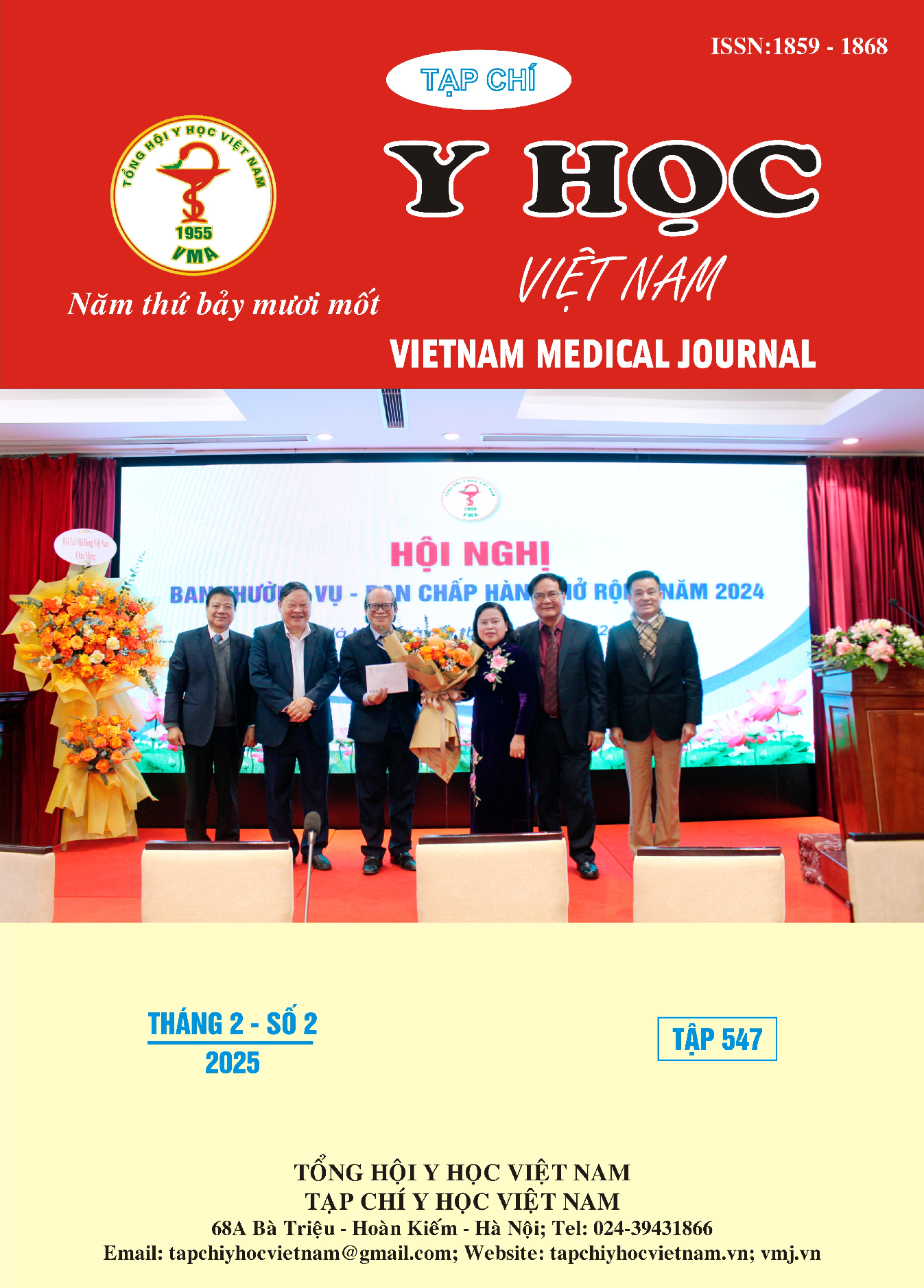MULTI-SLICE COMPUTED TOMOGRAPHY CHARACTERISTICS IN DIAGNOSING ANTERIOR CIRCULATION INFARCTION WITHIN 24 HOURS OF SYMPTOM ONSET
Main Article Content
Abstract
Background: Stroke is the second leading cause of death worldwide. The burden of stroke lies not only in its high mortality and morbidity rates but also in the fact that 50% of survivors are left disabled. Stroke is mainly classified into two types: cerebral infarction and cerebral hemorrhage. Imaging diagnostics play a crucial role in determining the type of stroke, guiding treatment, and monitoring patients. Objective: To study the characteristics of multi-slice computed tomography in diagnosing anterior circulation infarction within 24 hours of symptom onset. Subjects and Methods: 130 patients diagnosed with acute cerebral infarction due to anterior circulation occlusion who were treated with mechanical thrombectomy at E Hospital. Describe the characteristics of brain and cerebral vascular on MSCT and evaluate the relationship between brain and cerebral vascular CT characteristics with some clinical features in patients with acute circulation infarction. Results: The male/female ratio was 1.55/1. Patients aged ≥60 accounted for the highest proportion at 73.9%, with hypertension being the most common risk factor at 54.6%. The signs of hypodensity of the lentiform nucleus and loss of insular ribbon were the two most common signs on non-contrast brain CT scans, with rates of 70% and 53.8% respectively. There was a statistically significant relationship between Glasgow Coma Scale, National Institutes of Health Stroke Scale (NIHSS), Medical Research Council (MRC) scale, and modified Rankin Scale (mRS) with the degree of collateral circulation (p < 0.05). Conclusion: Brain and cerebral vascular CT charateristics are valuable in diagnosing acute circulation infarction.
Article Details
Keywords
Acute cerebral infarction, anterior circulation occlusion, cerebral vascular computed tomography.
References
2. Bộ Y Tế. Quyết định về việc ban hành tài liệu chuyên môn "Hướng dẫn chẩn đoán và xử trí đột quỵ não" Quyết định số 5331/QĐ-BYT ngày 23 tháng 12 năm 2020 (Bộ Y tế, Hà Nội, 2020).
3. Donkor ES. Stroke in the 21(st) Century: A Snapshot of the Burden, Epidemiology, and Quality of Life. Stroke Res Treat 2018, 3238165, doi:10.1155/2018/3238165 (2018).
4. Đặng Phúc Đức. Đánh giá đặc điểm lâm sàng và THBH theo giới ở bệnh nhân nhồi máu não cấp. Tạp chí Y học Việt Nam 525, 9 - 12 (2023).
5. Na-Young S, Kyung-eun K, Mina P, et al. Dual-phase CT collateral score: a predictor of clinical outcome in patients with acute ischemic stroke. PLoS One 9, e107379 (2014).
6. Phạm Hồng Minh, Vũ Đăng Lưu, Nguyễn Quang Anh và cộng sự. Đánh giá hiệu quả lấy huyết khối ở bệnh nhân nhồi máu não cấp do tắc mạch lớn tuần hoàn trước không dùng thuốc tiêu sợi huyết. Tạp chí y học Việt Nam 522, 1 - 5 (2023).
7. Wardlaw JM, Mielke O. Early signs of brain infarction at CT: observer reliability and outcome after thrombolytic treatment systematic review. Radiology 235, 444-453 (2005).
8. Miteff F, Christopher RL, Grant AB, et al. The independent predictive utility of computed tomography angiographic collateral status in acute ischaemic stroke. Brain 132, 2231 - 2238 (2009).
9. Ngô Tiến Quyền. Đặc điểm lâm sàng, hình ảnh học hệ động mạch cảnh trong qua chụp cắt lớp vi tính 6 dãy ở bệnh nhân nhồi máu não tại bệnh viện Quân Y 110, Luận văn bác sỹ chuyên khoa cấp II, Đại học Y - Dược, Đại học Thái Nguyên, (2019).
10. Rusanen, H., Saarinen, J. T. & Sillanpää, N. Collateral circulation predicts the size of the infarct core and the proportion of salvageable penumbra in hyperacute ischemic stroke patients treated with intravenous thrombolysis. Cerebrovascular Diseases 40, 182-190 (2015).


